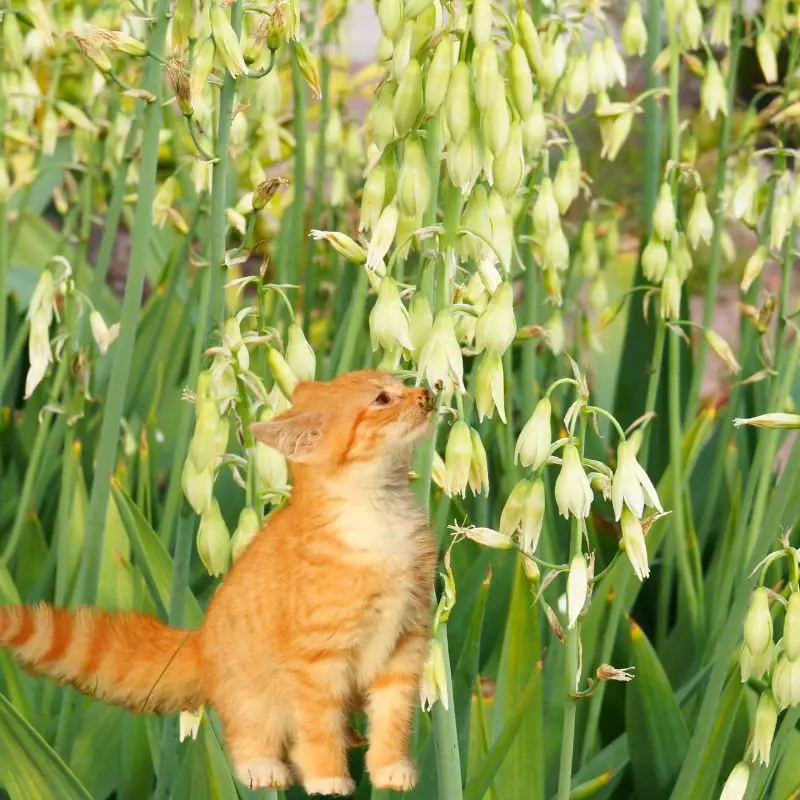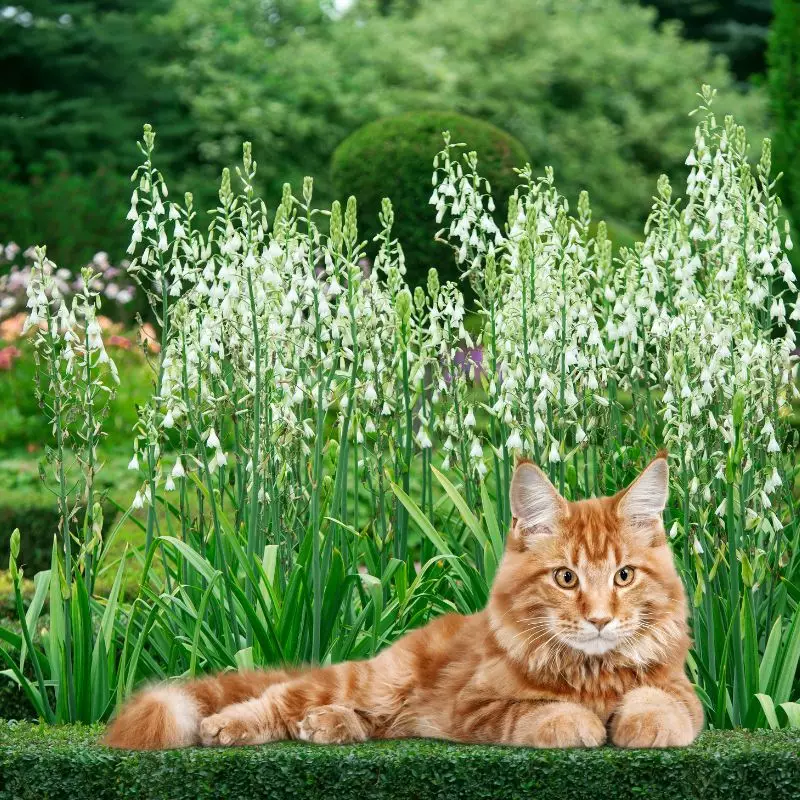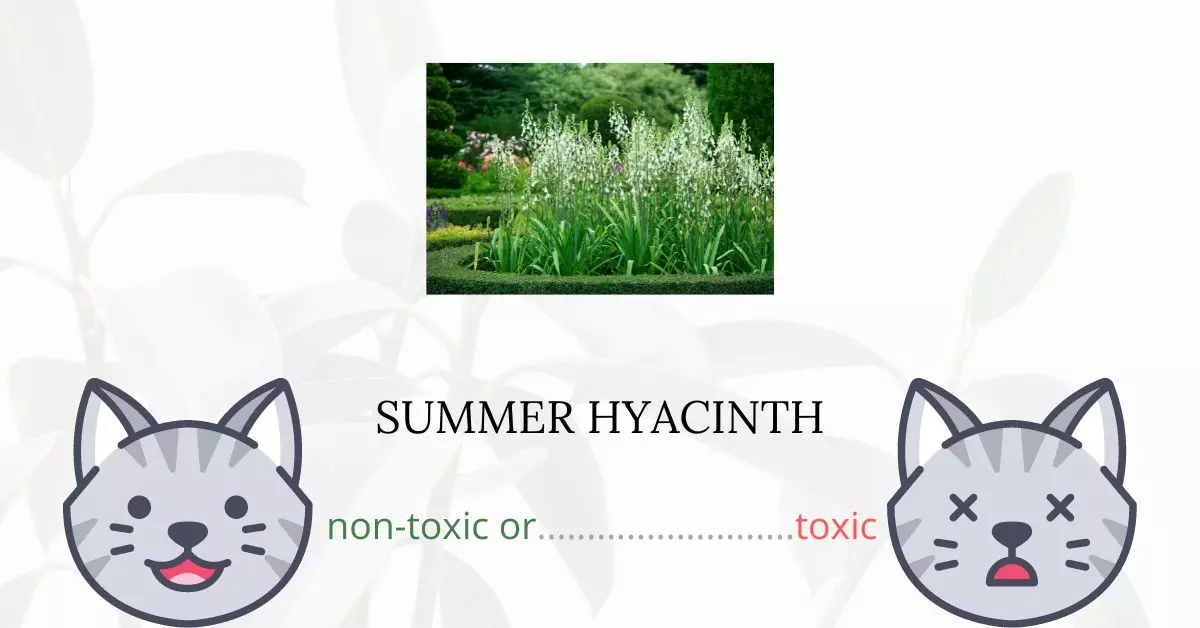No, summer hyacinths are not toxic for cats.
Based on our extensive research and in collaboration with a team of experienced DVMs (doctors of veterinary medicine), we can confirm that summer hyacinths are considered safe for felines. Their expertise, combined with data from high-authority websites such as the ASPCA and PetMD, indicates that there are no harmful substances in summer hyacinths that pose a risk to our beloved cats.
However, just because it’s listed as non-toxic does not mean cats should freely consume this plant. Always exercise caution and monitor your cat’s interaction with any plant.
Can Cats Eat Summer Hyacinth?

It wouldn’t be harmful to your cat to consume a summer hyacinth. If they unintentionally nibbled on this plant, you don’t need to make a fuss since it is not poisonous. However, it is not advised that they regularly consume or overconsume any kind of plant.
Cats are obligate carnivores, as we all know. They lack the stomach capacity to digest a large variety of plants. As a result, they have typical indigestion symptoms like abdominal pain, vomiting, and diarrhea. There’s no need to bother because the symptoms usually go away once the cat has expelled the plant matter from its system.
What is a Summer Hyacinth?

The summer hyacinth, also known by its scientific name Galtonia candicans, is a wonderful addition to a late summer garden. It has attractive, fragrant, pendant, bell-shaped, frequently green-tinged white flowers.
Native to southern Africa, the summer hyacinth is a bulbous perennial that reaches a height of 100–120 cm (39–47 in), has strap-shaped leaves, and blooms in the late summer that resemble white snowdrops. The Royal Horticultural Society has given this plant the Award of Garden Merit.
Summer hyacinths are wonderful for floral arrangements and are also used as cut flowers. They look stunning in beds, borders, and when planted beneath shrubs. In humus-rich, well-drained soils with full sun or partial shade, summer hyacinths are simple to grow. They are suitable for city gardens, cottage gardens, and rock gardens.
Keeping Cats Away From Summer Hyacinth

Cats may move away from problematic areas if pungent plants that cats detest are planted there. Lavender, rue, and coleus caninus are some possible choices that work well.
Commercial cat repellent that contains the smell of predators may cause them to flee. Spreading coffee granules or citrus peels (orange, lemon, lime, or grapefruit) around the backyard can also deter feline visitors.
The sound technique can also be used to keep cats away from plants. In the vicinity of your garden, try hanging wind chimes, motion-activated bells, or even jars filled with rattling rocks or pebbles.
Additionally, there are ultrasound and motion-activated products on the market that emit a frequency that humans cannot hear but which is intolerable to cats.
Plants to Avoid For Your Cats
If you are a cat owner and unsure if the plants growing in your yard are harmful to your cats, check out this list of toxic plants for cats. You can also check our list of non-toxic plants for cats.





